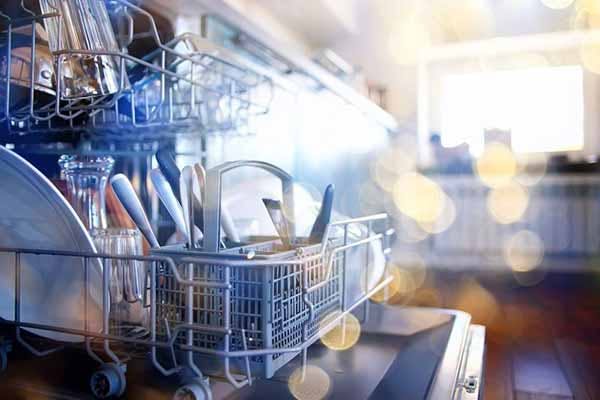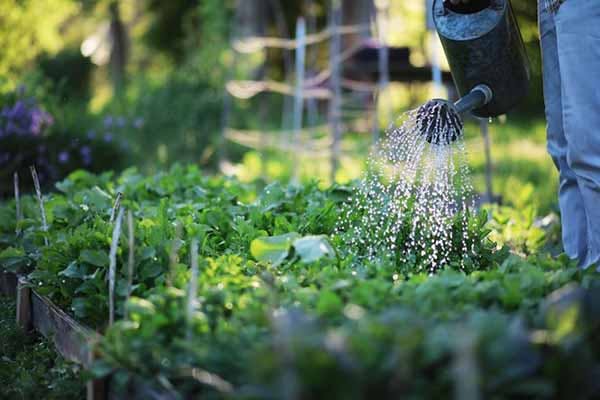August 2022
How to Save Water at Home: 14 Ways You Can Do Your Part
Water is a precious resource that we tend to take for granted, so many of us might not think much about how to save water at home.
Clean water is vital for the well-being of our populace, but most of us are probably not aware that there’s a limited supply – even in North America. Because of its value and relative scarcity, it’s essential that all of us learn how to save water at home.
Events, like droughts and shrinking rivers, can impact the way we live and how we use resources.
Whether you live in a city with a municipal water supply or in the country where you have your own well on the property, you can take steps to reduce your water usage by learning how to save water at home.
Proactively applying water conservation strategies can give us the resilience we will need to navigate significant environmental and climatic changes on individual and social levels.
Fortunately, there are many ways to reduce your household’s water usage and make water conservation simple.
In this article, we'll look at some ideas and tips on how to save water at home.
What Are Some Water Saving Tips for Water Conservation at Home?
Household water usage is centered in the bathroom, kitchen, laundry room, and garden. You can take steps to begin reducing water waste in each of these areas.
Most water-saving efforts don’t require any significant expense other than simply changing your water usage habits. They might not seem like a lot, but the following water-saving efforts can have a cumulative impact.
Find and Fix Water Leaks in Your Home
Finding and fixing leaks and drips can make a big difference to your water bill. Leaky faucets and pipes can add hundreds of dollars to your expenses each year.
Before you can fix the leaks, you have to find them. Leaks can be sneaky, hiding in basements and behind walls. You can use the EPA’s handy guide to finding leaks in your house to determine if you’re wasting water unknowingly. Then you can track them down and fix them.
Toilet tank issues such as leaks can be caused by a faulty flapper, which is supposed to regulate the water level. Replacing the flapper will prevent water running all day in the toilet and save you money on your water bill.
Use Your Dishwasher and Washing Machine at Their Fullest
Making a few small changes to how you use your kitchen and laundry appliances can reduce water use.
When using your dishwasher and washing machine, wash only full loads. This can save between 15 to 45 gallons for each wash, and 5 to 15 gallons per load in the dishwasher.
Avoid using the permanent press cycle and extra rinses on your washer. These settings require gallons of water that you don’t need to use on a regular basis.
Save Water by Streamlining Your Dish Washing Strategy
If you don’t have a dishwasher, you could consider investing in one. Dishwashers usually use less water than hand-washing dishes. According to one study, using a dishwashing machine will use less than 20% of the water used to hand wash, about half the electricity, and less soap.
If you can’t switch to a dishwasher because of the cost or because there isn’t enough room in your kitchen, consider changing how you wash dishes. Just soaking the dirty dishes in a sink-full of soapy water while you scrub them, instead of keeping the faucet running, will save a lot of water.
Switch to Water-Efficient Appliances
Switching to water-efficient and energy-efficient appliances in the laundry room and the kitchen does require some initial investment, but it will pay off by reducing your water and energy bills. For example, a top-loading washing machine can use up to 50 gallons of water per load of laundry! On the other hand, a more efficient, front-loading machine uses only about half that amount of water.
You can wait until the next upgrade is due for your laundry machines and dishwasher to get Energy Star and Watersense rated appliances. Water and energy savings are good news for your checkbook and the environment.
Change to Water-Efficient Bathroom Fixtures
Low-flow bathroom fixtures (showerheads or faucets) can reduce the amount of water used in the bathroom without sacrificing your needs.
The U.S. Environmental Protection Agency (EPA) certifies water-efficient bathroom fixtures like toilet tanks, showerheads, and sinks with a Watersense label. Watersense labeled products use at least 20% less water than standard fixtures.
Replacing your old toilet tank, which uses as much as seven gallons per flush, with a new high-efficiency model is an excellent place to start. You could get a new one that uses as little as 1.28 gallons per flush.
If you’re not ready to change your fixtures yet, you can still reduce the amount of water used for each flush by putting a water displacement device like a brick or a bottle full of water in the tank.
In some locations, you can even get free aerators and showerheads that will help conserve water.
Insulate Your Hot Water Tank and Pipes
Insulating hot water pipes will help your water heater work more quickly and efficiently. These efforts will pay off by reducing the time it takes to heat up the water. Insulation also lowers your water usage because you won’t need to run the water for too long in the shower before you get hot water.
Keep Bottled or Filtered Drinking Water in the House
With an under-sink water filter, you can easily fill a pitcher with fresh, filtered water to keep in the fridge. By keeping a pitcher of drinking water handy, you won’t have to leave the faucet running to cool off when you want a drink of cold water.
Ditch the Disposal and Opt for Compost
The garbage disposal unit in your kitchen uses a lot of water (about a gallon per day, per person) and wastes kitchen scraps that you could use to make compost instead.
It’s easy to get started with composting, and you’ll feel much better putting food waste like vegetable peels to good use instead of just dumping them in the trash. Even paper that would typically go into the wastebasket can also be composted.
Take Shorter Showers to Conserve Water
Taking shorter showers can drastically reduce your household’s water consumption. Keeping it to five minutes can mean using just 10 to 25 gallons — of course, you’ll come in on the lower end if you turn off the shower between soaping up! Turning off the showerhead instead of leaving the water running while you lather takes minimal effort, but it can make a big difference in the amount of water used.
Showers use less water than baths — 30 gallons for a bath, as compared to that of a short shower. Of course, bath time can grant precious moments of relaxation and reflection — and supporting our health and well-being is equally as important as supporting our planet.
If you are taking a bath, try filling the tub only halfway instead of to the top.
Reduce Water Waste in the Garden
To limit water usage outdoors, sweep your driveway clean instead of power washing it. Add mulch to ornamental plants to keep them from drying out. Or use that compost from earlier: it can improve the water retention of your soil!
Use a good old-fashioned watering can rather than your garden hose wherever possible. This way you’ll control the amount of water you’re pouring out for your plants.
Use Native and Drought Resistant Plants to Create a Xeriscape
The practice of xeriscaping to create landscapes that need little or no water is catching on. Typically, xeriscapes have plants that don’t need any artificial watering or irrigation but rely on the water provided by the local climate. That’s because these plants are typically native to desert climates that see little rain.
You could make a start by planting native and drought-resistant plants in your yard to reduce water usage. There are also drought-resistant grasses that you can consider planting in your yard to replace the thirsty ones.
Not only will you lower your water bill, but landscaping with native plants also creates a habitat for birds and other creatures that will find both shelter and food here.
Rethink How You Water Your Lawn
Lawns demand a lot of water, but it can be tough to watch your garden go dead and brown with less water in the summer. However, you can reduce the amount of water you use for your lawn by sprinkling it during the cooler morning hours. This will prevent the water from evaporating before the roots can absorb the moisture, which means your lawn will need less frequent watering.
Better yet – you can replace your lawn with stones, a seating area, life-giving pollination flowers, or a vegetable and herb garden! Lawns are pretty and give space for play, but in the interest of preserving the planet, many people are opting for something different.
If you’re loath to let go of it, keeping your grass longer (about three or four inches in height) will help it retain moisture for a longer time. Lawns need less frequent watering than most people think. That’s because most types of grass have hearty hibernation and rejuvenation capabilities. Also, a deep soaking every four to eight days will be better than regular sprinkling, as it encourages healthy root growth.
You can try installing water-saving sprinklers and irrigation systems. You can also reuse leftover drinking water from bottles and glasses to water the lawn and garden plants.
Keep in mind that grasses tend to go dormant in the dry season. A well-established lawn will recover when the weather turns more favorable. So if your yard goes dry and yellow in the summer, you can leave it to recover by itself when it rains.
Harvest Rainwater for Water Conservation
Rainwater harvesting is a simple but effective water conservation strategy. You can set up a water barrel to collect runoff rainwater and use that to water plants, wash the driveway, and for other outdoor uses.
You can buy a rainwater barrel at the local hardware store, or if you want a do-it-yourself project, you may enjoy constructing your own rainwater harvesting system.
Get a Home Water Audit
A home water audit will help you to identify places around your house where you could prevent water waste. Many local governments provide this service, which can be free to income-qualified households. A home water audit will also include suggestions and help make water-efficiency improvements. Once you have information about your water usage, you can make strategic moves to conserve water at home.
Are You Saving Water at Home?
After you put any of these conservation efforts into effect, you should figure out if they are improving your water usage. A straightforward way to determine if your water-saving steps are having any effect is to watch your consumption. You can do so by monitoring your water meter and your bill. You should see a reduction in the amounts of both throughout a billing cycle.
The impact of your water conservation efforts on the environment may be less visible immediately, but they will be long-lasting.
Water conservation has become an essential global effort, even where water seems abundant. That’s because our water resources are finite, and they are getting smaller every year because of global warming.
While it may not seem like you can make a difference, consider the eloquent words of the 14th Dalai Lama: “Just as ripples spread out when a single pebble is dropped into water, the actions of individuals can have far-reaching effects.”
Brought to you by homewater.com
All images licensed from Adobe Stock.
Featured Image

